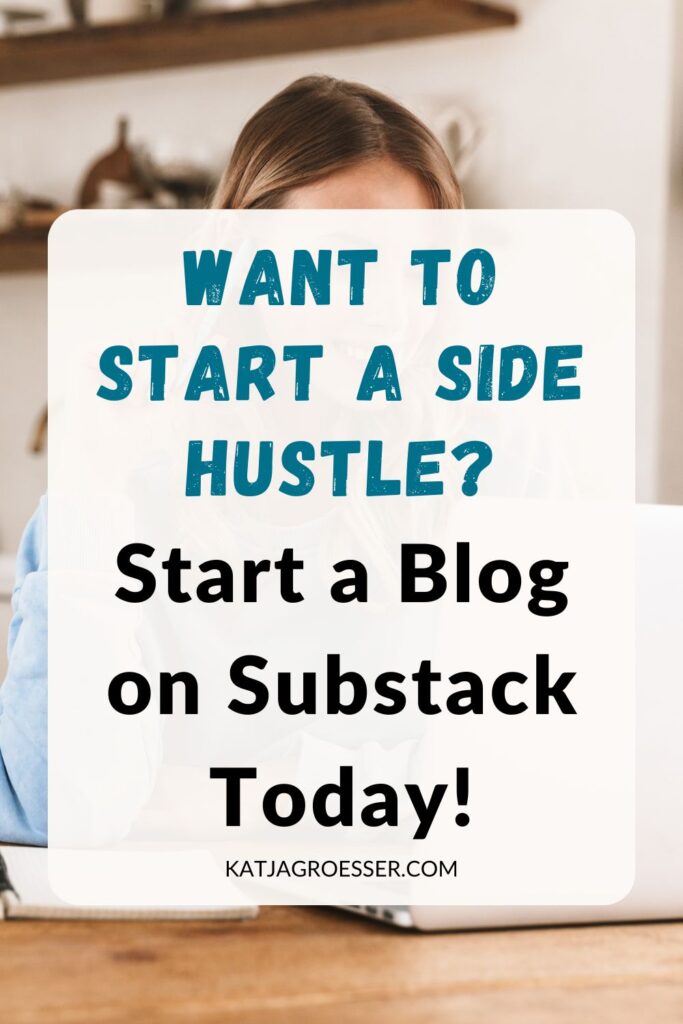This post may contain affiliate links. Please read my disclaimer for more information.
🚀 Ready to Grow Your Substack Side Hustle?
Grab the FREE “From 0 to 50 Subscribers” Starter Guide and kickstart your newsletter growth—no hustle, just smart steps.
I love talking about money management and making finances simpler, but I also know that saving money has its limits. If your income doesn’t fully cover your expenses, finding a way to earn extra money can be a great solution. Starting a side hustle online is a flexible and convenient option—you can work from home on your own schedule. Blogging has become a popular choice, and platforms like Medium and Substack have gained traction in recent years. If you’re looking for a side hustle and are considering starting a blog on Substack instead of launching a traditional blog, I’ll guide you through the process and help you get started.
I discovered Substack over two years ago and have successfully used it for my German business.
If you’re looking to share your expertise and insights through writing, starting a blog on Substack might be the perfect fit for you!
Why Substack? It provides an easy way to create and deliver content directly to your audience, all without any upfront costs. Starting a blog on Substack can be incredibly rewarding, whether you’re sharing personal stories, industry knowledge, or creative content. The platform is user-friendly, helping you build a community and even monetize your writing.
In this guide, we’ll dive into exactly what Substack is, why it’s worth considering, and how to get started with simple, step-by-step instructions. Stick around for actionable tips and a bonus resource at the end!
- What is Substack?
- Why Starting a Blog on Substack?
- What You Need to Know About Substack
- Starting a Blog on Substack in 10 steps
- 1. Sign Up and Set Up Your Account
- 2. Define Your Blog’s Focus
- 3. Customize Your Publication
- 4. Create Your First Post And Plan Your First 10 Blog Posts
- 5. Set Up Your Subscription Options
- 6. Promote Your Blog
- 7. Consistently Publish Quality Content
- 8. Grow Your Audience
- 9. Analyze Your Performance
- 10. Stay Committed
- Final Tips for Success on Substack
- FAQs About Starting A Blog On Substack
- Final Thoughts
What is Substack?
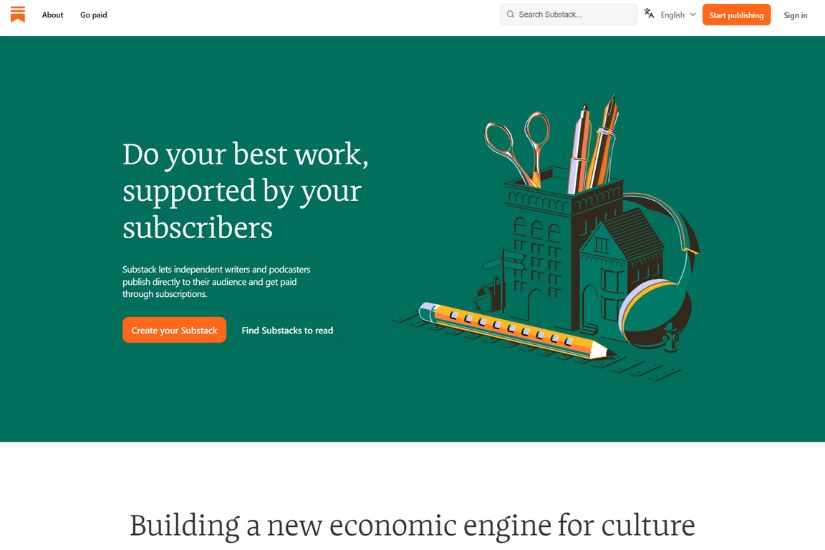
Substack is more than just a blogging platform – it’s a community-driven space where you can write, share your thoughts, and even get paid for your content.
Substack allows writers to publish posts, newsletters, and even podcasts. You can create both free and paid subscriptions, making it an excellent platform for monetizing your content. It’s ideal for anyone who wants to build a following and share valuable information without dealing with the complexities of traditional blogging platforms.
In short: Substack is a newsletter platform with built-in social media features.
For more in-depth information, check out these helpful resources:
What makes Substack stand out is its simplicity. Whether you’re a seasoned writer or someone new to the blogging world, Substack’s clean interface and user-friendly tools make it easy to get started. Plus, there’s no need for coding or complex setups – just sign up, start writing, and share your work.
Now that you know what Substack is, let’s explore why starting a blog on Substack might be the right move for you.
Why Starting a Blog on Substack?
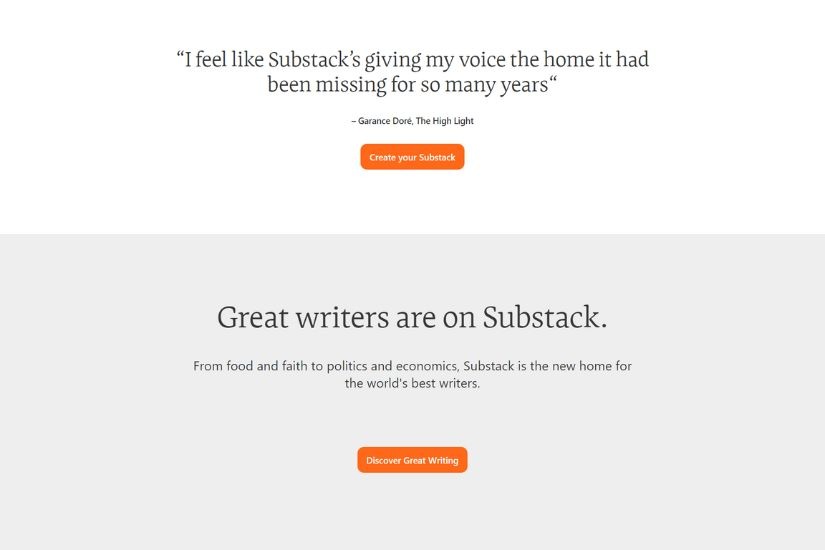
Wondering why so many content creators are flocking to Substack? It’s because Substack offers something traditional blogging platforms can’t – an all-in-one tool for content creation, audience growth, and monetization.
With Substack, you can focus solely on creating content, while the platform handles everything from email delivery to payment processing. Plus, Substack’s built-in audience features and subscription models make it easier than ever to turn your writing into a revenue stream.
Here’s what you get right from the start when starting a blog on Substack:
- A homepage for your content
- Built-in newsletter service
- Chat function for direct communication
- Notes (Substack’s social media feature)
- Podcast and video options integrated into your newsletter
- Analytics tools to track performance
The platform’s simplicity, the community building features and powerful monetization options are why I personally started using Substack alongside my blog. The built-in newsletter feature is a game-changer for connecting directly with readers and offering premium content to paying subscribers.
For more on the benefits of using Substack, check out:
- Get 1000 Raving Fans That Pay You with Substack “Orange Badge” Bestseller Valentin Bunea
- How Big Are Substack’s Network Effects, Really?
Ready to learn more? Let’s dive into some key things you should know before starting a blog on Substack.
What You Need to Know About Substack
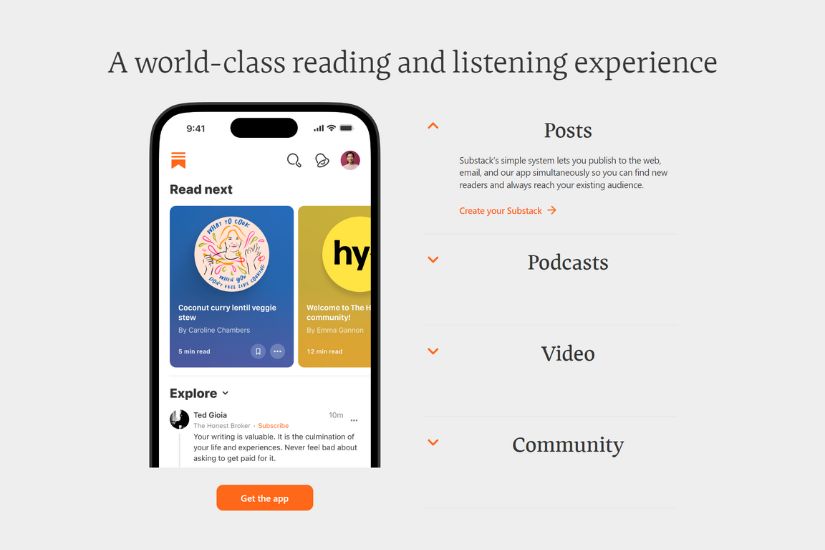
Before diving in, it’s important to understand a few essential features and considerations that will set you up for success on Substack.
Substack is free to use, but if you choose to offer paid subscriptions, the platform takes a 10% fee from each transaction, plus Stripe’s payment processing fees. Another important note: Substack focuses on email newsletters, allowing you to reach your audience directly in their inboxes.
For more details, refer to:
One thing to keep in mind is that while Substack’s simplicity is a plus, it doesn’t offer the same level of customization as traditional blogging platforms like WordPress. Although Substack is an email-based platform, it doesn’t offer the same extensive features as other email service providers (ESPs) like Kit.
If you’re okay with minimal design options and features in exchange for ease of use and audience engagement, Substack is an excellent choice.
Now, let’s get into the step-by-step process of how you can start your own blog on Substack today.
Starting a Blog on Substack in 10 steps
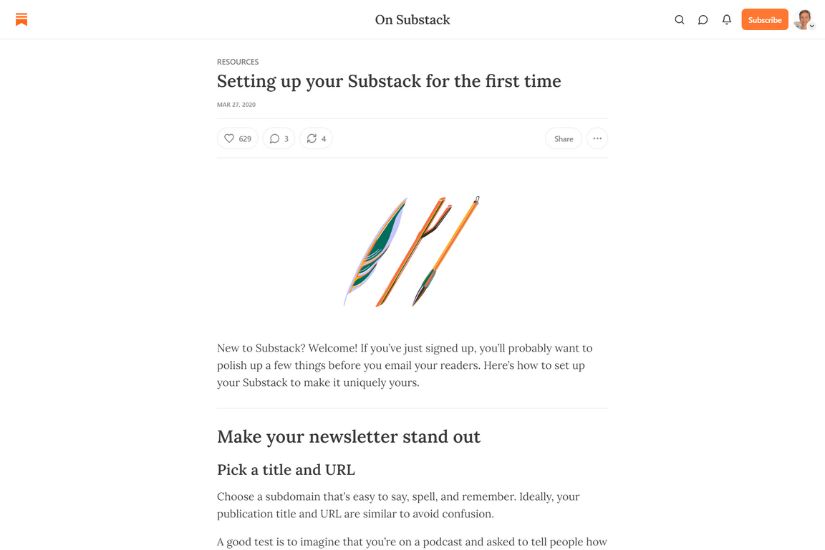
Here’s a step-by-step guide to get you started:
1. Sign Up and Set Up Your Account
Visit Substack.com and sign up for an account. It’s a straightforward process—just use an email address. I recommend setting up a separate Gmail account specifically for this, so your Substack emails don’t get mixed up with personal ones.
Choose a subdomain that reflects your blog’s identity. Ideally, it should match your publication’s name, but it’s not essential.
For example, while my subdomain is katja groesser.substack.com, my publication is called Female Finance.
My Pro Tip: If you’re unsure about your publication’s name and might want to change it later, consider using your own name in your domain. This way, you won’t have to update all your post slugs when rebranding.
2. Define Your Blog’s Focus
At this stage, starting a blog on Substack is similar to launching a traditional blog. The key is to decide on your niche. This will help you attract the right audience.
When visitors land on your Substack publication, they should immediately understand what you’re writing about and what they can expect from your content.
Consider what unique value or perspective you can offer.
Your niche will also play a big role in defining your Substack publication’s name. A clear and relevant name helps potential readers instantly recognize what your content is about, making it easier to attract the right audience.
- My publication´s name: Female Finance
- My niche is: Empowering women 40+ to take control of their financial future by providing practical advice, actionable strategies, and a supportive community to help them get out of debt, build savings, and invest confidently for long-term financial independence.
My Pro Tip: Your blog’s focus starts with defining your ideal customer avatar within a niche. If you’re unsure who your ideal reader is, you can use my Ideal Audience Profile Worksheet to help you define it.
3. Customize Your Publication

The great thing about starting a blog on Substack is that you can begin publishing content right away without worrying about complex customization.
However, there are a few essential customization features worth setting up to give your publication a polished and professional look.
- Upload a profile picture.
- Write a compelling bio that introduces yourself.
- Choose a catchy and memorable blog name.
- Craft an engaging introduction that clearly states your blog’s mission.
- Customize your publication’s design and layout to align with your branding (e.g., header image, publication logo, color scheme).
- Create your About page: This is where you can share details about yourself, explaining why you’re passionate about your topic and how you plan to help your readers. Highlight the value and benefits they can expect from following your blog.
- Write your “Thank You for Subscribing” email: This welcome email is sent to new subscribers and should provide a warm introduction to your blog. Use this opportunity to elaborate on your blog’s mission, what readers can look forward to, and how often they can expect updates.
4. Create Your First Post And Plan Your First 10 Blog Posts
Once you’ve set up the essential settings, you’re ready to go! As the proud owner of a Substack blog, it’s time to dive in and write your first post.
You have two options for creating your content:
- Write directly on Substack: Your post will be saved automatically, and you can return to edit it anytime.
- Prewrite in Google Docs or Word: This is my preferred method. Write and review your post in a document first, then paste it into Substack for final formatting.
To start:
- Click on “New Post” and begin drafting your content.
- Write engaging material that resonates with your target audience.
- Use formatting options, such as headers and lists, to make your posts easy to read.
When starting your blog, consider creating a small content plan for your first 10 posts, publishing one per week. Think about what your audience wants to read and how you can help solve their problems. A clear plan will keep you consistent and focused.
My Pro Tip: It’s easy to overlook the small but important details when publishing a post. That’s why I created a Substack post template that I personally use to write and publish all my posts. It keeps everything organized and streamlined!
5. Set Up Your Subscription Options
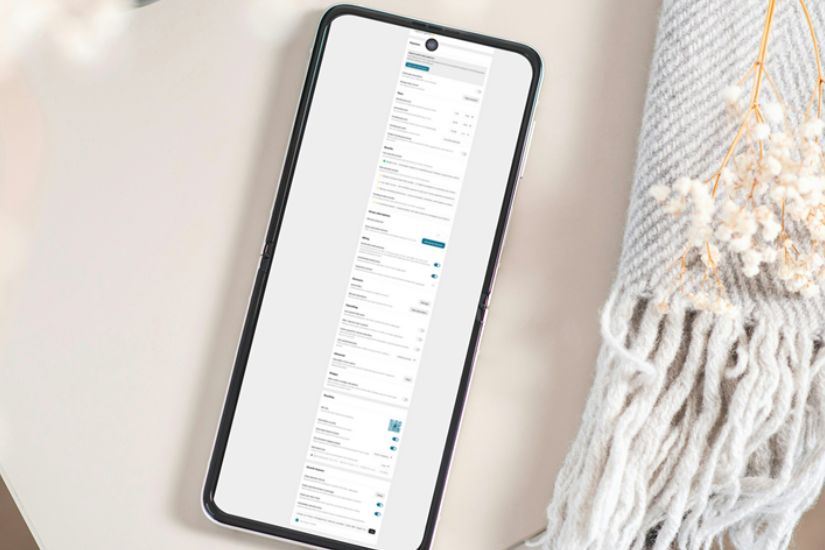
You can choose to offer paid subscriptions right from the beginning when starting a blog on Substack, but it’s entirely up to you. If you decide to go this route, you’ll need to have a clear plan for what paid content you’ll provide.
While Substack encourages starting with paid options, I recommend a different approach.
Instead, begin by publishing free content to understand your audience’s needs and interests. Build a small community first before considering a paid model.
This is the approach I’ve taken with my blog—I only offer free content. I chose this because I don’t want to feel overwhelmed by the pressure of consistently publishing paid content.
Decide whether you want to offer free or paid subscriptions (or both). If you choose to charge for exclusive content, set your subscription prices accordingly and plan a content strategy that aligns with your capacity and goals.
6. Promote Your Blog
As I always say: “The best content is useless if no one reads it.” This applies to Substack as well.
Fortunately, Substack isn’t just a blogging platform; it also offers great community and social media features.
With Notes, Substack’s social media feature, you can instantly share your posts and short, compelling updates. This helps other readers get to know you and engage with your content more effectively.
With direct messages on Substack, you can connect personally with your readers and subscribers. Additionally, you can share other writers’ content to foster engagement and build a sense of community.
In addition to sharing your posts on other social media platforms to attract readers, make sure to engage with your audience by responding to comments and emails. This helps build a strong connection with your readers and encourages ongoing interaction.
7. Consistently Publish Quality Content
Since your posts are sent directly to readers via email, it’s crucial to establish a consistent publishing schedule and stick to it. Thankfully, Substack offers a useful feature that encourages regular publishing by reminding you of your weekly streak.
With my first Substack publication, I achieved a 63-week streak, placing me in the top 5% of all publishers. This means that only 5% of publishers have managed to publish content for 52 weeks in a row!
My suggestion is to start with a weekly post and gradually increase your frequency as you gain confidence and develop a content plan.
You don’t have to stick to only long-format content. Combining a long-form post with a short-form one can give you two posts each week.
Consistency is crucial, as your readers will come to expect your content regularly. Keep your posts informative, valuable, and consistent to retain your audience and build a loyal following.
8. Grow Your Audience
Your initial goal should be to grow your audience. Building a solid reader base is essential before transitioning to paid content or selling products and services via your newsletter.
While consistently publishing content is a great start, it’s even more important to encourage readers to subscribe and share your blog. Substack makes this easy by allowing you to embed subscription buttons in your posts, either predefined or customized.
Another effective strategy is to collaborate with other Substack writers or guest bloggers. You can guest post on their publications and share their content on your blog or via Notes, Substack’s social media feature. This approach helps expand your reach and attract new readers.
Additionally, Substack allows you to recommend other publications when someone subscribes to yours, and vice versa. This cross-promotion can be very effective in growing your audience.
For example, on my publication, I currently have 349 subscribers, with 171 gained through recommendations.
9. Analyze Your Performance
To write better and more focused content, using Substack’s analytics tools is crucial. These tools allow you to track subscriber growth and engagement, helping you identify which posts generate the most interaction and attract new readers.
By reviewing your stats, you can adjust your content strategy based on what resonates most with your audience. This insight also helps in identifying potential areas for paid content or products.
10. Stay Committed
Starting a blog on Substack can open up new opportunities for creating an online income, especially if you love writing. Remember, building a successful blog takes time and effort.
Stay committed to your goals and keep refining your content, even if you start by writing just for yourself.
Final Tips for Success on Substack
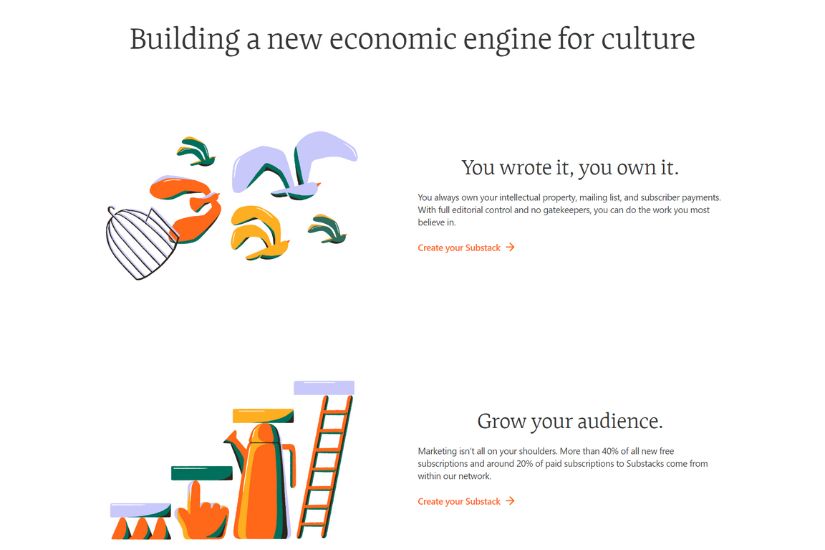
Starting a blog on Substack is a smart move when you are looking to grow an engaged audience and monetize your content with ease.
Remember to stay consistent, engage with your readers, and keep learning as you go. Whether you’re using Substack to complement an existing blog or as your primary platform, the steps above will set you on the right path.
For more resources and tools to help you on your journey, check out:
- Start A Blog And Make Money: The Ultimate Guide For Women 40+
- How I Successfully Cross-Promote Between My Blog and Substack
- Blog vs. Substack: How to Use Both to Build Your Online Empire
FAQs About Starting A Blog On Substack
Final Thoughts
Starting a blog on Substack is easier than you might think. It’s an excellent way to build a loyal audience and potentially earn income from your writing. If you want to step into the world of online business and content creation, Substack can be a great first step.
Plus, you can always begin on Substack and, as you grow and gain confidence, expand to your own blog as a more comprehensive online business platform.
Save this post to your favorite Pinterest board for later👇.
